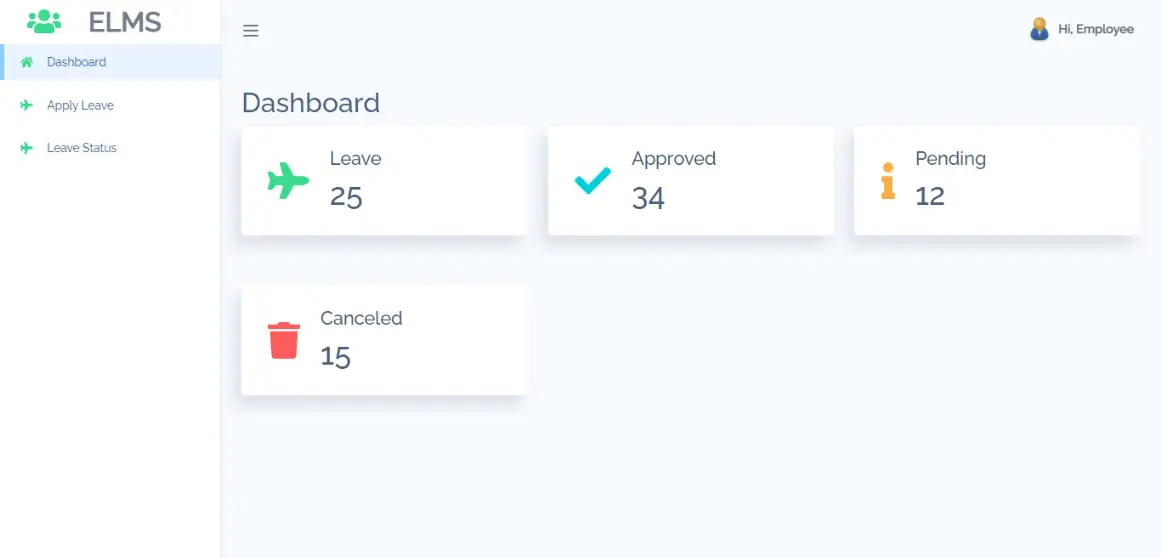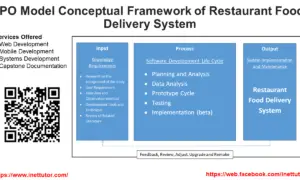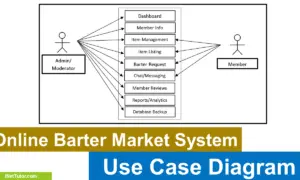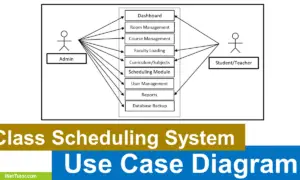IPO Model Conceptual Framework of Employee Leave Management System
This post will demonstrate how to develop a conceptual framework for a capstone project titled Employee Leave Management System. The input, process, output (IPO) model was used to develop the conceptual framework for the investigation.
About the Project
The capstone project entitled “Employee Leave Management System” will allow automated management of employee leave. The system will allow the application, approval and management of employee leave to be processed electronically.
In businesses, employers want to keep employees in work at all time but it is not possible, employees deserves their fair share of time to rest and recuperate so business organizations must grant work leaves to their employees because overworked employees are unproductive one. Most of the organizations uses manual approach to process employee leave application which is very tricky and challenging. Within just one misstep in the process it can cause problems to the organization especially in payroll processing and legal complications.
Objectives of the Study
- To provide a system that would serve as a centralized location for work leave requests.
- To provide a system that would help business organizations process efficiently the transactions involving work leave filing and applications.
- To provide an up-to-date information system for leave management.
- To provide a system that would reduce the manual work of a business.
- To design a system that is more convenient and has a comfortable environment for the administrators and the users.
Conceptual Framework/Model
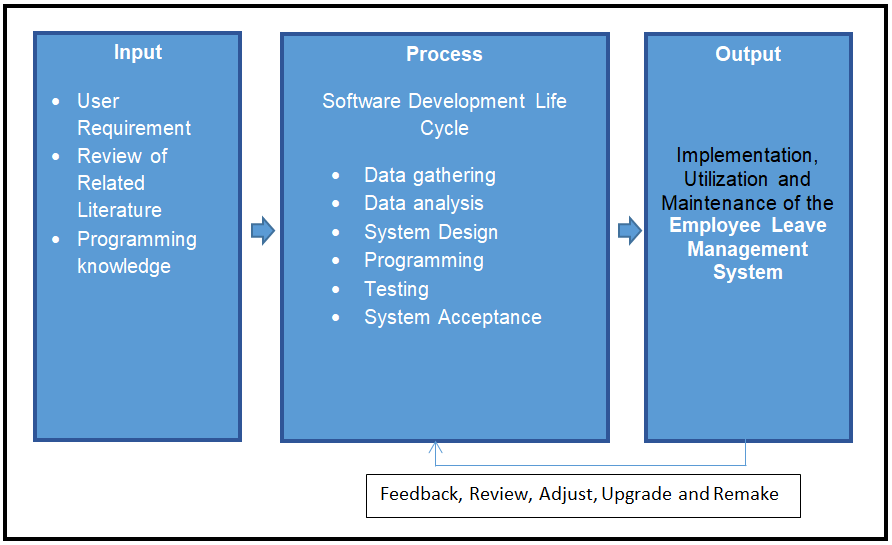
The image above depicts the project’s conceptual framework, entitled Employee Leave Management System. It is based on the input, process, and output (IPO) model.
Input
User Requirement –This is the area where the researchers obtained information about the system’s unique properties. It is vital to consider their suggestions because they will be the ones using the employee leave management system.
Review of Related Literature – The researchers have conducted investigations and studies in the proposed system’s region. This procedure will be useful to the researchers as they develop the project or system.
This is where the researchers can now use their knowledge in programming to design and develop the system.
Process
This is the part where the researchers will select and choose the best software development life cycle model for the project.
Data gathering
During this stage, the researcher for the study gathered all potential system development demands, including those obtained from the system’s beneficiaries, the end users. The researcher created the survey questionnaire, which was then validated by professionals. The surveys were created to collect information in order to improve the performance of the proposed system for future community use.
Data analysis
Consultation is used to obtain end-user requirements and generate ideas. We also distributed a survey questionnaire, which was approved by all three experts (IT Expert, English Grammarian, and Researcher). These questionnaires also provided as a data collection tool for assessing the performance of the manual system, which served as the foundation for developing our proposed system.
System Design
The prototype and planned system features are developed at this phase. A concrete understanding of how the system will function is also created. In this section, we determine all of the relevant system inputs and outputs, as well as the data, process, and interface designs.
Employee Leave Management Free Bootstrap Template – Employee Dashboard

The design of a system for employee leave management is an important task. The system should be able to handle the various types of leave that employees may request, as well as keep track of the leave that has been approved and used. The system should also be able to generate reports on employee leave usage.
One possible approach to designing a system for employee leave management is to use a database. The database should contain information on the types of leave that are available, as well as the approval and use histories of these leaves. The system should also be able to generate reports on employee leave usage.
Programming
In this stage, we materialized the whole idea of the software to be designed. We created the program for the proposed system. The actual coding of the software is based on the system design and the requirements needs to be met. This is where the proper execution of the previous stages ensures a smooth implementation.
Program testing
In this phase, the researcher performed series of testing to check for any possible problems may arise during implementation and operation of the software and if the specification has been met.
The testing phase is an important part of the software development process. It allows developers to test the software to ensure that it meets the requirements specified in the requirements document. The testing phase also allows developers to find and fix any defects in the software.
In the testing phase for the employee leave management system, the developers will test the software to ensure that it meets the requirements specified in the requirements document. They will also test the software to ensure that it is error-free. The developers will also test the software to ensure that it is user-friendly.
The testing phase for the employee leave management system will allow developers to find and fix any defects in the software. This will ensure that the software is reliable and accurate. The testing phase will also allow developers to make any changes to the software that they want. This will ensure that the software meets the needs of the users.
System acceptance
This is the final stage, where the system is being installed and to be maintained after actual implementation. One must take into consideration are the hardware and the software requirements for the proper installation of the system. As part of the acceptance of this phase, the client is required to have a user training to enable them to familiarize fully the whole system.
Output
The project comes to life and is carried out in the real world once all of the necessary procedures have been finished. A new project is born, and it will be maintained for the project’s long-term survival. The Employee Leave Management System will be implemented and used. At this point, they will be installed, used, and maintained in order to last a long time.
Summary
The investigation’s conceptual framework will be the input, process, and output (IPO) model. The researchers evaluate the project’s user demands and investigate relevant literature for the study before putting their programming skills to work on it. To finish the system, the researchers will employ the Software Development Life Cycle (SDLC) method. Its purpose is to ensure that the project progresses through several stages in order to give comprehensive functionality that meets the expectations of the users. The Employee Leave Management System will be implemented, used, and maintained as a result of this project.
You may visit our Facebook page for more information, inquiries, and comments. Please subscribe also to our YouTube Channel to receive free capstone projects resources and computer programming tutorials.
Hire our team to do the project.
Related Topics and Articles:
